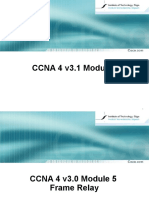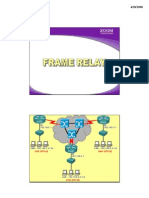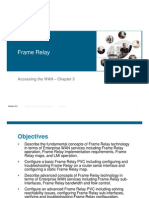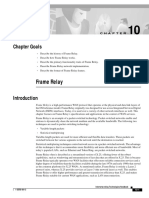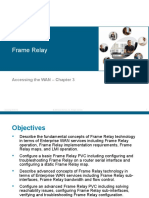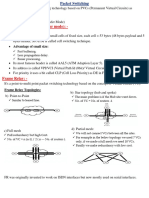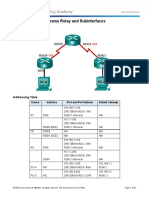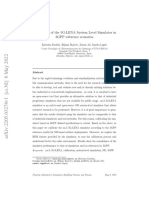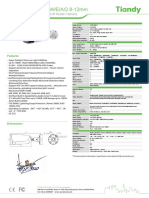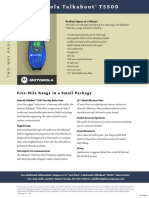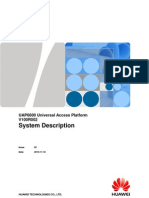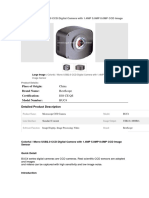0% found this document useful (0 votes)
55 views37 pagesFrame Relay
Frame Relay is a packet-switched WAN technology that operates at the data link layer. It uses virtual circuits identified by Data-Link Connection Identifiers (DLCIs) to transmit frames between network devices. Frame Relay provides connection-oriented services through permanent virtual circuits (PVCs) and switched virtual circuits (SVCs). Configuration involves encapsulation, bandwidth specification, subinterface configuration to resolve non-broadcast issues, and mapping DLCIs to IP addresses. The Local Management Interface (LMI) exchanges status and configuration information between devices.
Uploaded by
mihaboy339Copyright
© © All Rights Reserved
We take content rights seriously. If you suspect this is your content, claim it here.
Available Formats
Download as PDF, TXT or read online on Scribd
0% found this document useful (0 votes)
55 views37 pagesFrame Relay
Frame Relay is a packet-switched WAN technology that operates at the data link layer. It uses virtual circuits identified by Data-Link Connection Identifiers (DLCIs) to transmit frames between network devices. Frame Relay provides connection-oriented services through permanent virtual circuits (PVCs) and switched virtual circuits (SVCs). Configuration involves encapsulation, bandwidth specification, subinterface configuration to resolve non-broadcast issues, and mapping DLCIs to IP addresses. The Local Management Interface (LMI) exchanges status and configuration information between devices.
Uploaded by
mihaboy339Copyright
© © All Rights Reserved
We take content rights seriously. If you suspect this is your content, claim it here.
Available Formats
Download as PDF, TXT or read online on Scribd
/ 37

